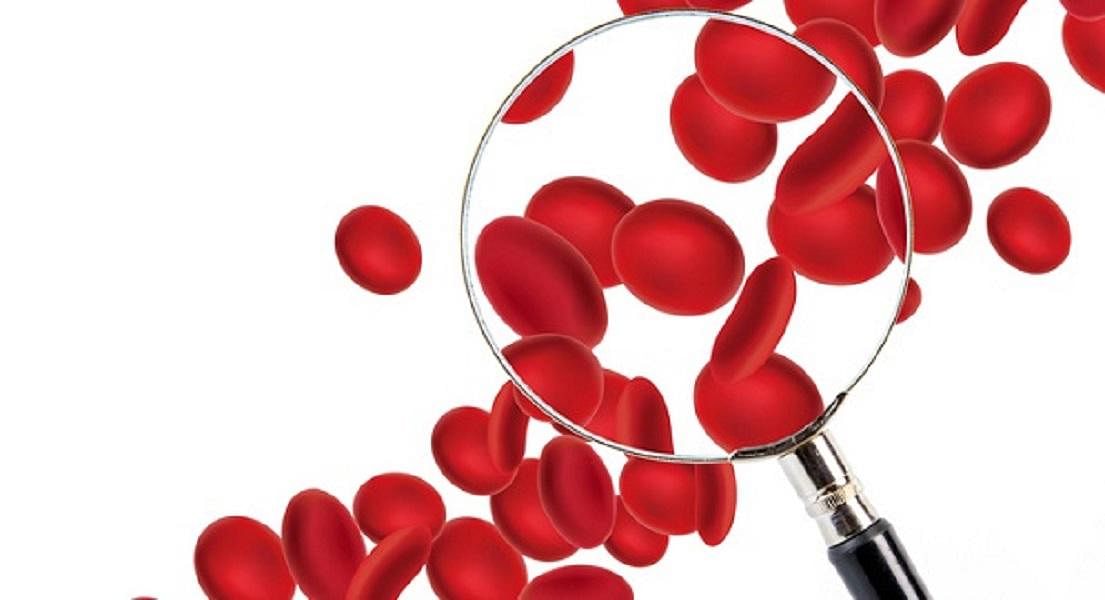Anaemia: More Than Just Iron Deficiency
Why you can trust Nutri Advanced Every article on our site is researched thoroughly by our team of highly qualified nutritionists. Find out more about our editorial process.
When someone says they’re anaemic – you’ll likely guess they have an iron deficiency. But this is not always the case. There are in fact, many different types and causes, and iron deficiency is just one of those.
Here we put the record straight and give you a clear definition of what anaemia actually is, as well as an outline of the main types and causes, and how best to deal with the most common types.
What actually is anaemia?
If you are diagnosed with anaemia, this means your body doesn’t have enough red blood cells.
This may happen if:
• Your body doesn’t make enough
• Your body destroys them
• Bleeding is causing you to lose more red blood cells than your body can make
Red blood cells are produced in your bone marrow. They contain an iron-rich protein called haemoglobin that gives blood its red colour, and enables red blood cells to carry oxygen from your lungs around the body, and to carry carbon dioxide back to your lungs so it can be exhaled. To make haemoglobin and red blood cells, your body needs iron, vitamin B12 and folate, amongst other nutrients too.
Common symptoms of anaemia:
• Tiredness / fatigue
• Pale skin
• Weakness
• Irregular heartbeat
• Shortness of breath
• Dizzy or lightheaded
• Headache
• Chest pain
• Cold hands and feet
Types of anaemia
Iron deficiency anaemia
This is the most common type of anaemia worldwide. Your bone marrow needs iron to make haemoglobin – without adequate iron, your body can’t make enough haemoglobin for red blood cells. Iron deficiency anaemia is common during pregnancy and may also be caused by heavy menstrual bleeding, ulcers and regular use of over-the-counter pain relief medications such as aspirin. This type of anaemia is often treated fairly quickly with a course of iron supplementation. However, commonly prescribed iron supplements may not be well tolerated and can cause gastrointestinal problems such as constipation. Iron bisglycinate is often recommended as an alternative form as it is highly absorbable and gentle on the GI tract.
Vitamin deficiency anaemia (folate, B12)
As well as iron, you need other nutrients such as folate and B12 to make red blood cells too. If your diet is lacking in these nutrients, it can affect overall production. Vegetarians and vegans in particular are at higher risk of B12 deficiency as it is found in rich supply in animal foods such as meat and dairy products. Folate is more widely available in plant foods; rich sources include green leafy vegetables such as spinach and broccoli and peas, beans and lentils.
If you find you are low, you can take a combination of folate (as 5-methyl tetrahydrofolate), vitamin B12 (as methylcobalamin) and intrinsic factor.
Pernicious anaemia
Pernicious anaemia is a type of vitamin B12 anaemia that happens when the intestines cannot properly absorb vitamin B12. A special type of protein, called intrinsic factor (IF) is needed for absorption to take place, however, if the stomach doesn’t produce enough IF, the intestines cannot properly absorb vitamin B12. This can be caused by a weakened stomach lining (atrophic gastritis) or an autoimmune condition where the body’s immune system attacks either the intrinsic factor protein or the cells in the stomach lining that make it.
Hemolytic anaemias
This group of anaemias develops when red blood cells are destroyed faster than bone marrow can replace them. Hemolytic anaemias can be inherited or develop later in life. Sickle cell anaemia is a type of inherited haemolytic anaemia caused by a defective form of haemoglobin that makes red blood cells have an abnormal crescent (sickle) shape. They die prematurely, resulting in a chronic shortage of red blood cells.
Other anaemias
There are many different types of anaemia. Others include anaemias of bone marrow disease, thalassemia, malarial anaemia, aplastic anaemia and anaemias of chronic disease where certain diseases such as Crohn’s and chronic inflammatory diseases interfere with the production of red blood cells.
What to do if you think you’re anaemic
The take away message is that anaemia is a term that covers much more than just iron deficiency. Some of the common signs such as tiredness can be symptomatic of many other health problems too, so it’s important to get a proper diagnosis if you suspect you may be anaemic. First port of call if you’re at all concerned is to see your GP to evaluate whether you may be anaemic and if so, identify the type and the cause. Whilst there are many different types, the most common ones, such as iron deficiency anaemia are easily corrected with simple measures such as supplementation, it’s just important to be aware of the signs and symptoms so you can take action if needed.
This website and its content is copyright of Nutri Advanced ©. All rights reserved. See our terms & conditions for more detail.
Nutri Advanced has a thorough research process and for any references included, each source is scrutinised beforehand. We aim to use the highest value source where possible, referencing peer-reviewed journals and official guidelines in the first instance before alternatives. You can learn more about how we ensure our content is accurate at time of publication on our editorial policy.
Most Popular Articles
-
7 Surprising Ways To Support Your Magnesium
If you are displaying signs of a magnesium deficiency, here are 7 ways to boost your magnesium levels that are easy to incorporate into your daily life. -
5 Best Vitamin C Supplements Picked By Our Experts
Learn more about the different types of vitamin C, the different benefits you get from different types, and what you get for spending more on a good supplement. -
Top 5 Vitamins For Energy And Tiredness Picked By Our Experts
The 5 best and most important vitamins for energy & tiredness including B vitamin food sources & best supplement forms for energy. -
Benefits of Myo-Inositol for Polycystic Ovary Syndrome (PCOS)
In this research review article, we take a closer look at a lesser-known natural compound called myo-inositol that has been found to have significant potential to improve many of the prevalent features of PCOS. -
Top 10 Reasons to Give Your Kids Omega-3
Read the top 10 reasons that kids should have plenty of Omega-3- an essential fatty acid- including for depression, brain function, sleep & reading/maths skills.






